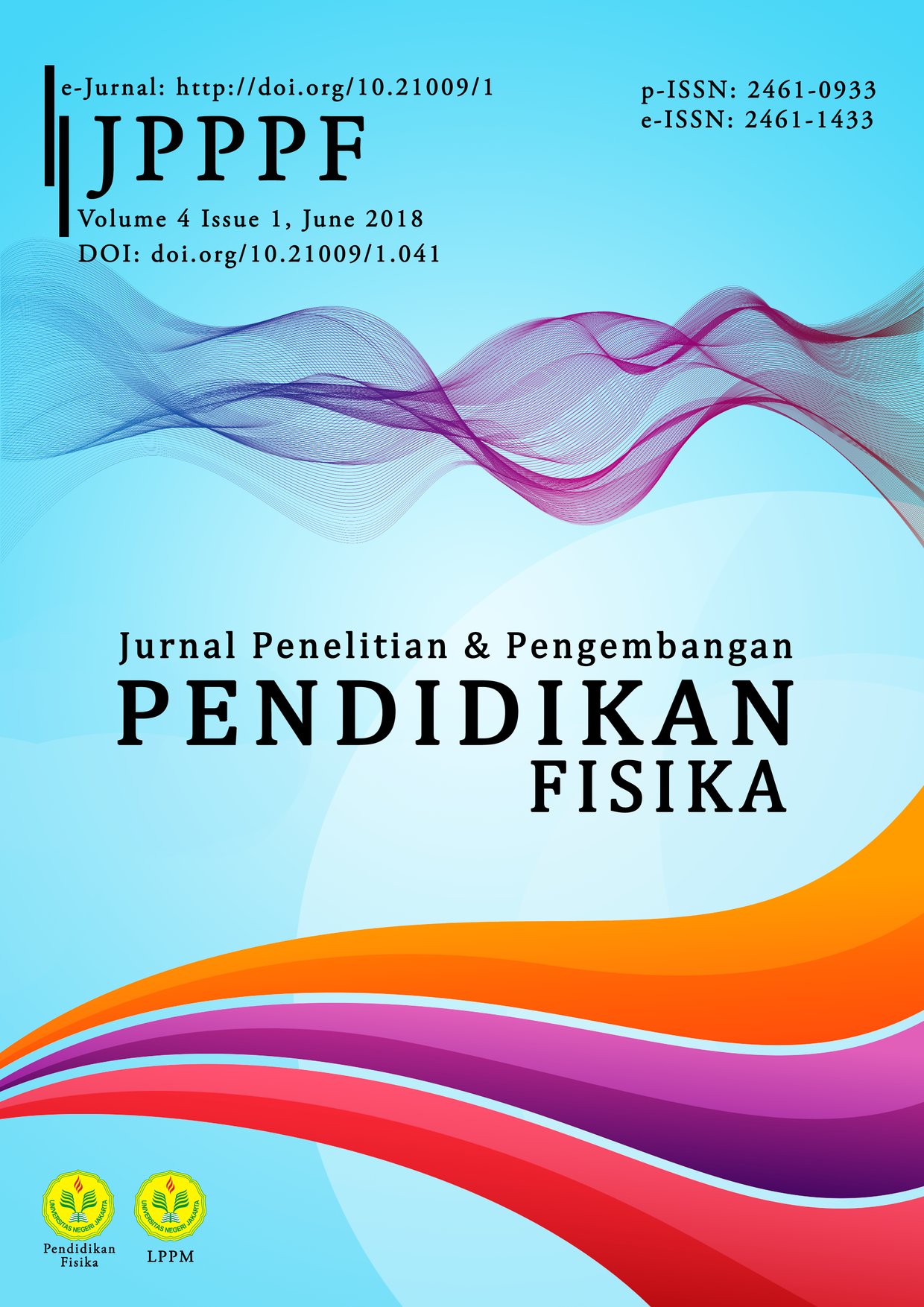The Effectiveness of Applying STEM Approach to Self-Efficacy and Student Learning Outcomes for Teaching Newton's Law
DOI:
https://doi.org/10.21009/1.04102Keywords:
learning outcomes, Newton's Law, STEM ApproachAbstract
This research aimed to determine the effectiveness of STEM learning approaches to self efficacy and student learning outcomes in Newton Law material. The design of this research is Quasi-Experiment with One Group Pretest-Posttest Design. The data obtained in this study are self efficacy data and student learning outcomes. Self efficacy result data was obtained through self efficacy scale is given before and after learning using STEM approach. While the data of student learning outcomes obtained through the question of the form of plural choices and essays given to students before and after learning using the STEM approach. Based on the research above, the average value of N-gain in self efficacy and students’ learning outcomes before and after being taught through learning using STEM approach. The average gain of n-gain in self efficacy and students' learning outcomes have increased with moderate category The result showed that STEM learning approach was effective to improve self efficacy and student’s learning outcomes.
References
Beier, ME & Ashley, DR 2008, ‘Overview: Self Efficacy in STEM’, Applying Research to Practice (ARP) Resources, Januari 2008, pp. 1-12.
Blackley, S, Rahmawati, Y, Fitriani, E, Sheffield, R, & Koul, R 2018, ‘Using a Makerspace Approach to Engage Indonesian Primary Students with STEM’, Issues in Educational Research, vol. 28, no. 1, pp. 18-42.
Breiner, JM, Harkness, SS, Johnson, CC, & Koehler, CM 2012, ‘What is STEM? A Discussion About Conceptions of STEM in Education and Partnerships’, School Science and Mathematics, vol. 112, no. 1, pp. 3-11.
ByBee, RW 2013, The Case for Stem Education: Challenges and Opportunitie, National Science Teacher Association.
Dimyati dan Mudjiono, 2002, Belajar dan Pembelajaran, PT Rineka Cipta, Jakarta.
Morrison, J 2006, ‘STEM Education Monograph Series: Attributes of STEM Education’, Teaching Institute for Essential Science, Baltimore, MD.
Reeve, Edward, M & Avery, ZK 2013, ‘Developing Effective STEM Professional Development Program’, Journal of Technology Education, vol. 25, no. 1, pp. 55-67.
Roberts, A & Cantu, D 2012, Applying STEM Instructional Strategies to Design and Technology Curriculum, Departement of STEM Education and Proffesional Studies Old Dominion University, Norfolk, VA, USA, pp. 111-116.
Siyamta 2013, Ranah Kognitif dalam Pembelajaran, Gramedia, Malang.
Surapranata, S 2004, Peningkatan Pendidikan MIPA dalam Master Plan Pendidikan Indonesia, Dalam Booldet Seminar Nasional Penelitian Pendidikan dan Penerapan MIPA, FMIPA UNY, Yogyakarta, p. 9.
Suwarma, IR, Astuti, P, Endah, NE 2015, ‘Ballon Powered Car sebagai Media Pembelajaran IPA Berbasis STEM (Science, Technology, Engineering, and Mathematics)’, Prosiding Simposium Nasional Inovasi dan Pembelajaran Sains 2015 (SNIPS 2015), ISSN: 978-60219655-8-0, pp. 373-376.
Winarni, J, Siti, Z & Supriyono, KH 2016, ‘STEM: Apa, Mengapa, dan Bagaimana’, Prosiding Seminar Nasional Pendidikan IPA Pasca Sarjana Universitas Negeri Malang, ISBN: 978-602-9286-21-2, pp. 980-981.
Zimmerman, B 2000, ‘Self-efficacy: An Essential Motive to Learn’, Contemporary Educational Psychology, vol.25, no.1, pp. 82-91.











